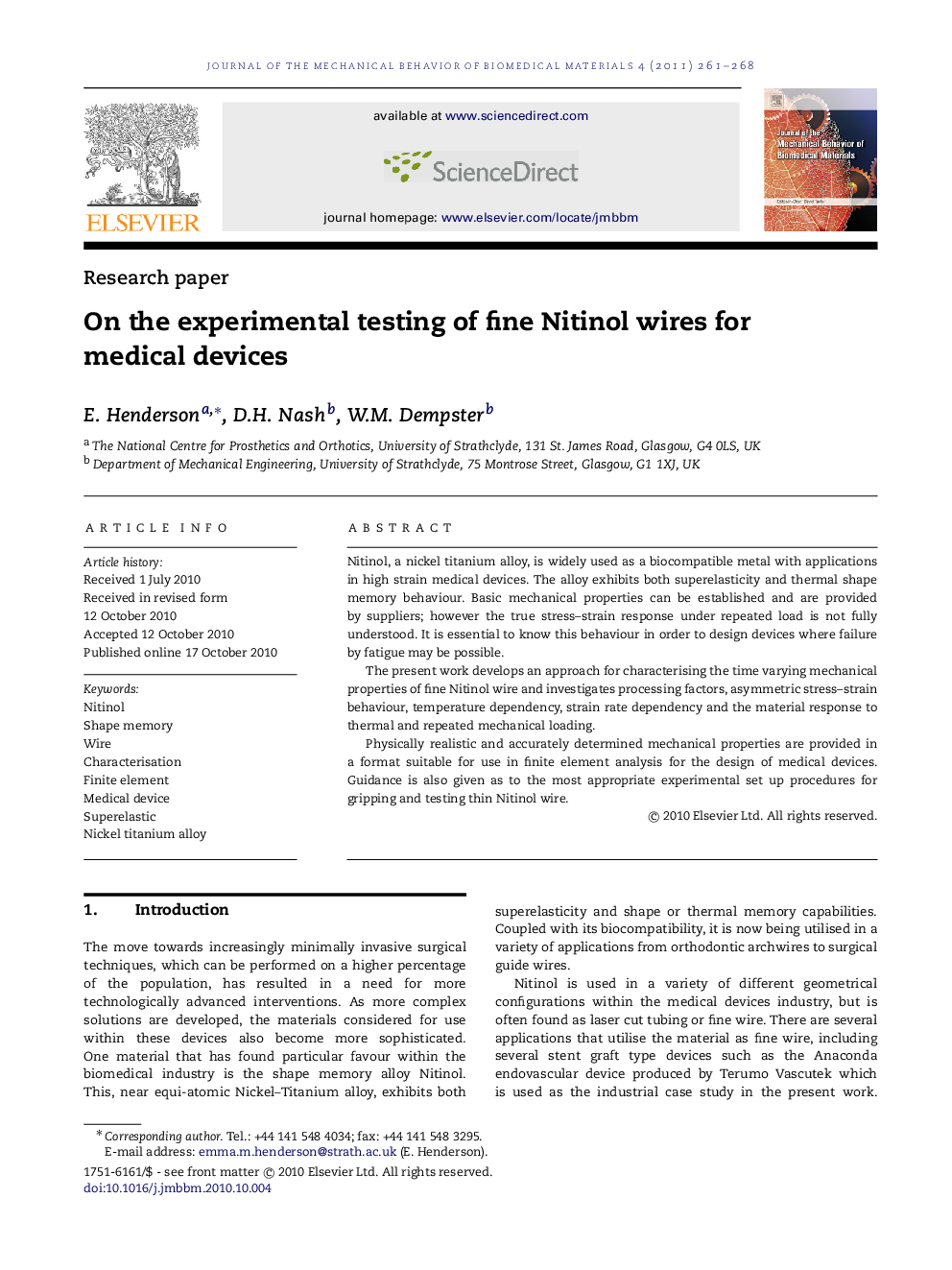| Article ID | Journal | Published Year | Pages | File Type |
|---|---|---|---|---|
| 811432 | Journal of the Mechanical Behavior of Biomedical Materials | 2011 | 8 Pages |
Nitinol, a nickel titanium alloy, is widely used as a biocompatible metal with applications in high strain medical devices. The alloy exhibits both superelasticity and thermal shape memory behaviour. Basic mechanical properties can be established and are provided by suppliers; however the true stress–strain response under repeated load is not fully understood. It is essential to know this behaviour in order to design devices where failure by fatigue may be possible.The present work develops an approach for characterising the time varying mechanical properties of fine Nitinol wire and investigates processing factors, asymmetric stress–strain behaviour, temperature dependency, strain rate dependency and the material response to thermal and repeated mechanical loading.Physically realistic and accurately determined mechanical properties are provided in a format suitable for use in finite element analysis for the design of medical devices. Guidance is also given as to the most appropriate experimental set up procedures for gripping and testing thin Nitinol wire.
Graphical abstractFigure optionsDownload full-size imageDownload high-quality image (288 K)Download as PowerPoint slideResearch highlights► Even at low strain rates, dependency of the response on strain rate is still seen. ► Low magnitude cycling tests reveal degradation in response during initial cycles. ► Bending or compression loading gives rise to an asymmetrical response of Nitinol. ► One cycle tensile tests provide incomplete data for use in finite element analyses.
